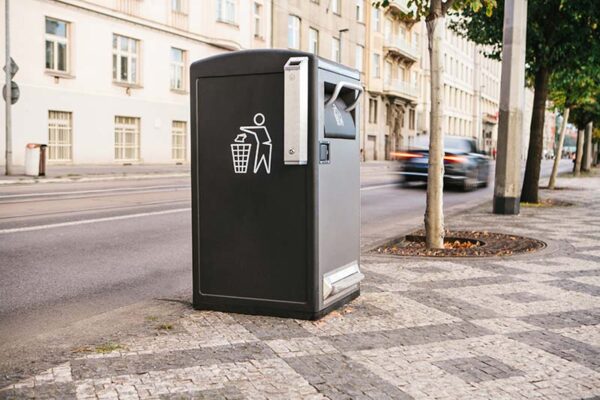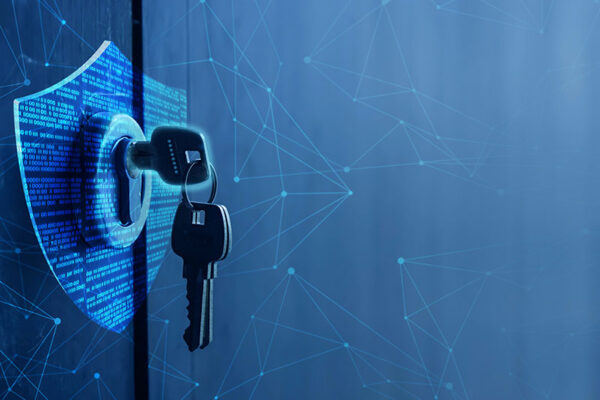Smart Cities: Ensuring IoT Security for Public Safety
By Greg Oppenheim
October 21, 2025
By Greg Oppenheim
October 21, 2025
Estimated reading time: 8 minutes

Smart cities employ Internet of Things (IoT) technology to create an efficient and responsive connected metropolis. The smart cities market is expected to grow at a compound annual growth rate (CAGR) of 29.4% from 2025 to 2030.
Smart infrastructure, like transportation and utilities, provides real-time updates on traffic and usage. Connected emergency systems shorten response times.
However, increased connectivity exposes vulnerabilities that could put citizens at risk. Ensuring seamless component integration is a key challenge when creating smart cities.

Smart cities efficiently coordinate:
With IoT infrastructure, smart cities utilize connectivity and data to provide citizens with an efficient and personalized experience.
A resilient IoT network is crucial for a smart city, which leverages multiple technologies, including:
5G and extensive IoT sensor networks enable fast, high-bandwidth data sharing. This enhances public services, enriching citizens’ quality of life through improved efficiency.
5G technology enhances IoT capabilities through:
Features such as point-to-point communication among 5G devices enable new applications in IoT, aiding in the development of smart cities.
With these changes, cities must prepare and plan for new risks, like increased cyberattacks. As digital and physical systems become more integrated and attack surfaces expand, cities must adopt various security strategies to respond effectively.
Implementing a security by design approach when planning smart city projects is crucial. This includes:

Countless sensors and devices drive smart city innovations. Identity management includes systems that ensure every network sensor and device possesses a secure and unique identity. This includes protocols for assigning, managing and securing these identities across extensive IoT networks.
Identity management ensures that each device connected to smart city infrastructure is:
Certificates are crucial for authenticating IoT devices. Certificate authorities vet organizations before issuing certificates, ensuring their validity. Each certificate includes both a private key and a public key, which work together to securely authenticate entities. Digital certificate standards, such as X.509, enable the streamlined management of digital identities.
Blockchain is a secure, decentralized ledger system that stores device identities and activity records in a tamper-resistant way. It maintains a chronological, unalterable record of transactions or events.
Effective identity management enables the delivery of personalized, responsive services by integrating AI and machine learning. For example, public transit systems can integrate with city infrastructure to create customized routes and recommendations based on typical schedules and locations.
Governance oversees basic rules and higher-level controls. Effective governance encompasses a range of elements. These include administrative policies and more complex aspects like data governance, which dictates how IoT device data is managed. The following are some areas to watch:
Leaders of smart cities must coordinate with stakeholders to develop modern policies while maintaining privacy. For example, the EU’s Data Governance Act defines a set of rules for providers of data intermediation services (e.g., data marketplaces). The act ensures that they will function as trustworthy organizers of data sharing or pooling within the common European data spaces. This delicate balance drives progress without compromising public trust.
Effective governance requires collaboration between the public and private sectors to drive progress while mitigating risks. System integrators and information experts must manage and interpret large amounts of data generated by smart city applications. Public-private partnerships (PPPs) enable governments to leverage the private sector’s technical expertise and efficiencies in funding complex, high-cost projects.

Effective smart city planning is a catalyst for sustainability. In the Netherlands, smart cities are integrating renewable energy sources like solar pavement footpaths. This reduces carbon footprints while increasing efficiency.
Waste management is optimized in many smart city projects through sensor-enabled smart bins that minimize collection routes and emissions. These measures align with broader sustainability goals.
Smart waste management systems efficiently keep the city clean and safe. EV charging stations support smart mobility and reduce emissions. These types of sustainability measures rely on secure IoT systems that provide safe data:
Securing IoT in smart cities requires a proactive, layered approach. Both physical and digital vulnerabilities must be addressed.
Smart city infrastructure connects countless devices across locations. You must consider risks across every layer of the stack. This means security by design, which encompasses:
For example, a traffic system uses advanced communication networks and high-level encryption to support secure and reliable operations. Embed security from the start to build resilient systems that protect public trust and ensure long-term success.
Whether it’s surveillance cameras or public Wi-Fi in busy transit hubs like airports and train stations, securing the hardware of IoT devices is crucial. The edge, where devices connect to the network, is often the first target for attacks across large IoT networks. Robust physical protection and secure firmware help defend against breaches.
Federal standards like FIPS 140 validate cryptographic processes for standardized and secure encryption and authentication. Adopting standards like the IoT Security Foundation Framework can help create a baseline for protection.
However, continuous advancement is still necessary. Pay attention to evolving needs and threats as you explore use cases for various initiatives, such as transportation and public safety.
Smart cities often operate in hybrid environments, where legacy infrastructure coexists with newer technology. Gradual hardware upgrades can leave outdated systems embedded in critical operations, posing security and efficiency risks.
Ongoing security planning ensures cities identify outdated infrastructure risks and avoid rushed transitions. They can proactively budget to phase out old solutions still embedded in critical operations.
Solutions like AWS IoT ExpressLink simplify security requirements by providing pre-provisioned devices with secure certificates and connections. This way, smaller businesses can participate in the smart city ecosystem.
Centralized platforms offer opportunities to automate remote device management, improving operational efficiency. Streamlining and automation improve predictability and enhance anomaly detection, helping identify potential issues before they escalate. With more reliable device oversight, security threats have fewer openings.
Automating repetitive tasks and maintaining network predictability helps organizations effectively detect anomalies and potential security threats.

Smart cities rely on millions of connected sensors and devices that generate vast amounts of data. These IoT devices require constant, secure connectivity to function reliably, especially in critical areas like:
Security becomes complex when multiple projects and stakeholders are involved. Coordinating across agencies and jurisdictions requires effective planning to avoid conflicts and ensure consistent protection.
Secure connectivity is essential for accessing criminal justice databases and enabling real-time communication between vehicles and command centers. Technologies like 5G and Wi-Fi 6 support these operations with high-speed, low-latency connections.
To protect sensitive data, many smart city platforms offer virtual private clouds (VPCs), which provide a secure, containerized area for applications. These VPCs allow organizations to access cloud applications via VPNs. IoT devices remain off the public internet and are protected from unauthorized access.

Building smart cities is an ongoing process, shaped by challenges and opportunities. Cities can leverage IoT to enhance public safety by focusing on:
As technology advances, the potential for smart cities to improve the quality of life and ensure safety continues to grow.
Smart cities start with smarter infrastructure supported by dependable and manageable connectivity. Telit Cinterion offers proven IoT modules and connectivity services to help cities deploy secure, scalable solutions tailored to their needs.
Speak with our experts to discover how our secure IoT solutions can enable your public safety and smart city projects.